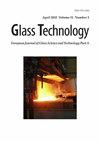肯尼亚大学学生网路洞察力作为学术资源工具的组成部分之间的相互关系
IF 0.3
4区 材料科学
Q4 MATERIALS SCIENCE, CERAMICS
Glass Technology-European Journal of Glass Science and Technology Part a
Pub Date : 2017-03-07
DOI:10.47672/ejt.894
引用次数: 1
摘要
目的:本文的目的是确定肯尼亚大学学生的互联网洞察力作为学术资源工具的组成部分之间的相互关系。方法:本研究在Moi大学和Daystar大学进行。本研究以Bandura的社会学习理论为基础,关注网络自我效能,辅以Davies的技术接受模型。采用定量研究方法。采用事后调查研究设计。研究人员使用了435名(Moi大学)和175名(Daystar大学)的代表性样本,从两所大学的教育学院抽取了2015/2016学年的610名三年级学生教师。采用分层抽样法对各阶层学生按性别进行分类;参与者是随机选择的。问卷被用作数据收集的工具。内容效度是在教育学院运用专家判断建立的。采用测试复测的方法来检验采集数据的仪器是否可靠。采用描述统计和推理统计对数据进行分析。描述性统计采用数据频率、百分比和平均值。采用方差分析(ANOVA)、卡方检验和事后检验来检验假设。结果:被试对网络知识、自我效能感、感知网络有用性和感知网络易用性的评价基本一致。在理论、实践和政策方面的独特贡献:本文的结果对肯尼亚高等院校的教育计划设计有用,也为弥合数字鸿沟领域的知识差距提供了一个平台,该平台后来用于技术接受研究。本文章由计算机程序翻译,如有差异,请以英文原文为准。
THE INTERRELATIONSHIP AMONG THE COMPONENTS OF STUDENTS’ INTERNET INSIGHT AS AN ACADEMIC RESOURCE TOOL IN KENYAN UNIVERSITIES
Purpose: The aim of this paper was to determine the interrelationship among the components of students’ internet insight as an academic resource tool in universities based in Kenya.
Methodology: The study was conducted in Moi University and Daystar University. The study was based on the Social learning theory by Bandura focusing on internet self-efficacy and supplemented by Technology acceptance model by Davies. Quantitative research approach was undertaken. An ex post facto research survey design was adopted. The researcher used a representative sample of 435 (Moi University) and 175 (Daystar University)adding up to 610 Third year student teachers of the academic year 2015/2016 drawn from School of Education in the two universities. Stratified sampling was used to categorize students by gender from each stratum; participants were chosen randomly. Questionnaires were used as instruments of data collection. Content validity was established by use of expert judgment in the school of education. Test re-test method was applied to check if the instruments that collected data were reliable. Descriptive and inferential statistics were applied to analyze data. In descriptive statistics data frequencies, percentages and mean was used. Analysis of variance (ANOVA), Chi square and Post hoc tests were used to test the hypotheses.
Results: The findings indicated that more participants concurred with almost all accounts on internet knowledge, self-efficacy, perceived internet usefulness and perceived internet ease of use.
Unique contribution to theory, practice and policy: The results of the paper are useful in designing educational programs in Kenyan institutions of higher learning and also, present a platform to close the gap of knowledge in digital divide field which is used later in technology acceptance studies.
求助全文
通过发布文献求助,成功后即可免费获取论文全文。
去求助
来源期刊
CiteScore
0.30
自引率
0.00%
发文量
0
审稿时长
>12 weeks
期刊介绍:
The Journal of the Society of Glass Technology was published between 1917 and 1959. There were four or six issues per year depending on economic circumstances of the Society and the country. Each issue contains Proceedings, Transactions, Abstracts, News and Reviews, and Advertisements, all thesesections were numbered separately. The bound volumes collected these pages into separate sections, dropping the adverts. There is a list of Council members and Officers of the Society and earlier volumes also had lists of personal and company members.
JSGT was divided into Part A Glass Technology and Part B Physics and Chemistry of Glasses in 1960.

 求助内容:
求助内容: 应助结果提醒方式:
应助结果提醒方式:


